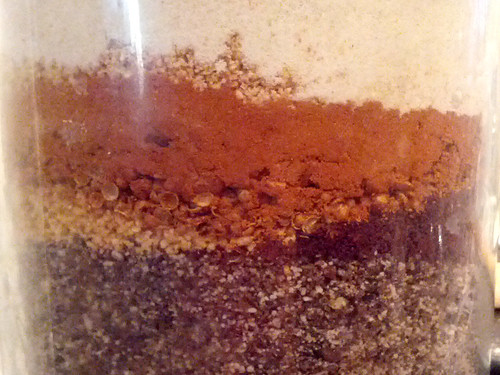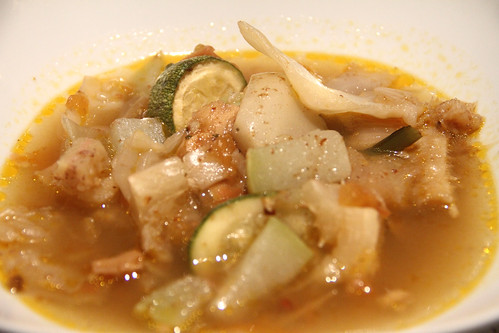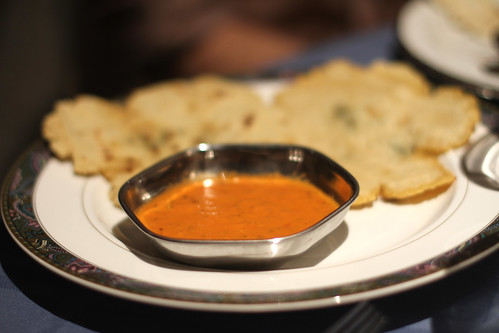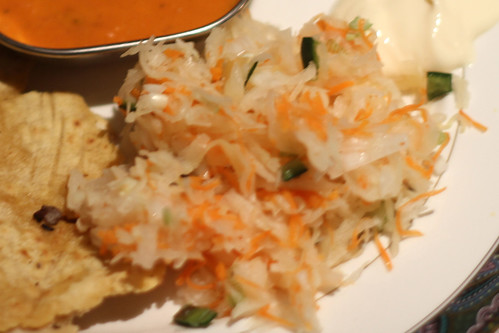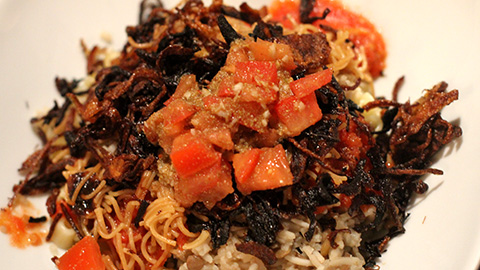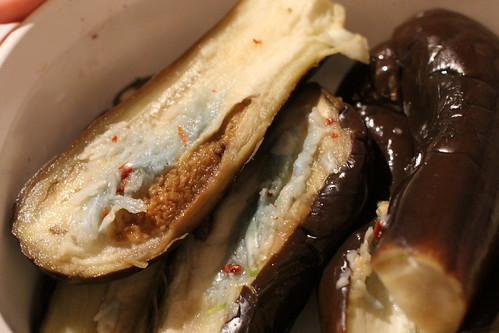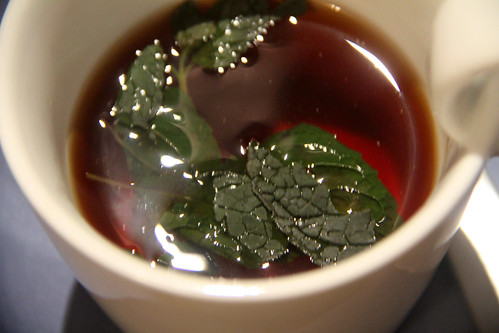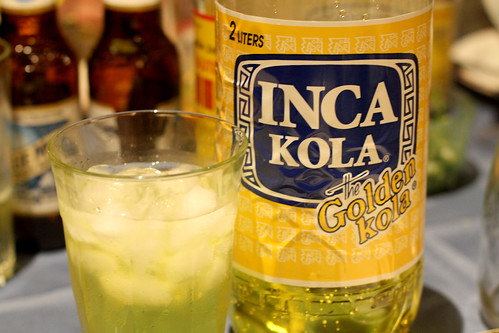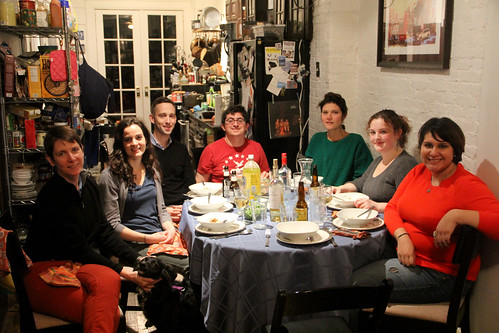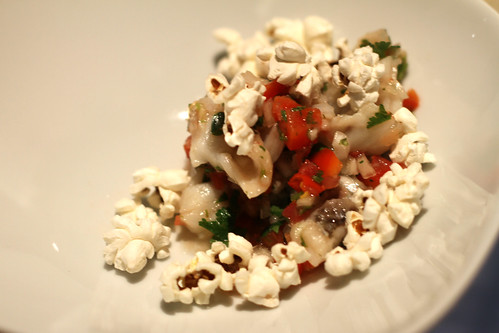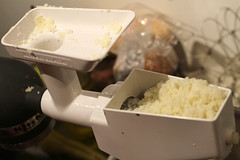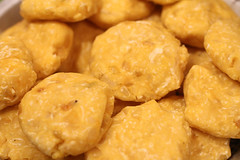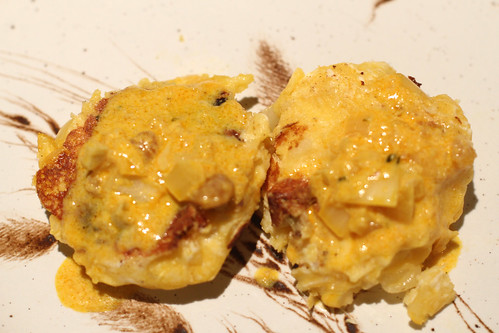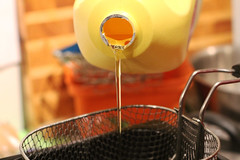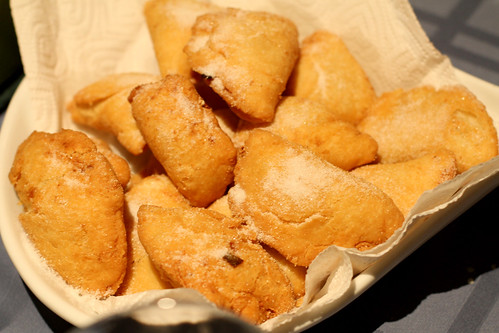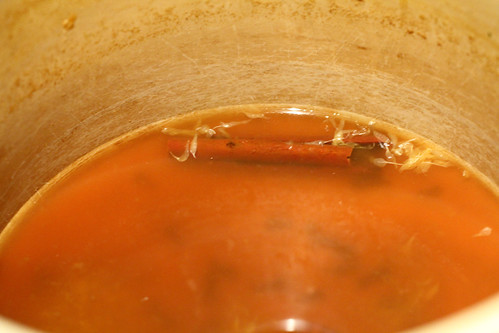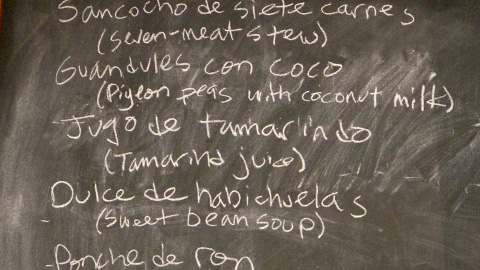 This wedge-shaped country on the Red Sea has seen a tumultuous history, especially in the past decade and a half: colonization by Italy after the opening of the Suez Canal, being stapled to its larger neighbor Ethiopia in the 1930s when the Italians invaded there too; a thirty-year war for independence that finally ended in 1991; and since then a highly autocratic government that is intolerant of any dissent. (Oh, and a border war with Ethiopia for good measure in the late '90s.)
This wedge-shaped country on the Red Sea has seen a tumultuous history, especially in the past decade and a half: colonization by Italy after the opening of the Suez Canal, being stapled to its larger neighbor Ethiopia in the 1930s when the Italians invaded there too; a thirty-year war for independence that finally ended in 1991; and since then a highly autocratic government that is intolerant of any dissent. (Oh, and a border war with Ethiopia for good measure in the late '90s.)
But how about the food? Well, frankly, it's not that different from Ethiopian, especially from the north half of that country. The berbere spice blend is a bit different, the clarified butter recipe has some modifications, but when it comes down to it, you're eating spiced stews with tangy, spongy flatbread. Since Ethiopia's coming up soon, I think we'll concentrate on food from the south of that country for the sake of contrast.
Joining us for this eat-with-your-hands Saturday night were Dan, Chelsea, Anna, David, Mia, Mike, and Raven.

Berbere | Spice blend | Recipe

I had thought berbere was a type of pepper — a rich, complex, intriguing pepper at that. But no! It's a really complex blend of spices, including two types of chili pepper (three if you include mild paprika), plus all sorts of spices and powdered aromatics.
As with so many great spice blends, you start by toasting the whole spices and grinding them. (Don't over-toast! I was waiting for the "pop" the recipe prescribed and ended up burning the first batch, so I started over. Nobody likes burnt spices.) Since I had whole cinnamon and black cardamom, I added those to the other stuff the recipe said to toast. Thank goodness for my trusty cheap little coffee grinder; my Cuisinart just isn't up to the task of grinding those hard spices.
This recipe gives you about a cup and a half of a blend that, curiously, has so much character that it could go with so many things. If you're not up for that much personality in one Mason jar, cut in half. And of course, if you don't have an ingredient on hand, substitute and improvise!
Tesmi | Spiced clarified butter | Recipe
Similar in concept to, but a bit differently flavored than, the Ethiopian niter kibbeh. Simply put, throw finely chopped onion and a few spices in melted butter, cook really slowly until the solids fall to the bottom, and strain. Boom, a flavorful and clarified milk fat that will heat much higher than butter before burning.
Keyih tibsi | Beef in quick red stew | Recipe

I've sautéed onions hundreds, maybe over a thousand, times. But never have I done it without oil! It went against my intuition to throw a bunch of beautiful, sliced red onions in the hot pan with nothing in between. Yet with no more stirring than normal sautéeing requires, they softened up nicely...but I did breathe a sigh of relief when the recipe finally let me put a bit of the clarified butter in!
Anyway, the dish was awesome. The sweet onions balanced the rich beef and the complexity of the berbere very well, and the chopped tomatoes made for a nice base. I skipped the adobo and forgot the jalapeño and still the dish had plenty of satisfying flavor. To really carry this over the top, perhaps I'd go for a slightly more tender cut of beef, but I don't feel like we lost a whole lot on that account.
Tsebhi derho | Simmered chicken | Recipe

This is probably the first recipe I've made from a textbook! I appreciated the description, particularly the part that explained that the recipe calls for twelve boiled eggs to represent the Apostles. (NB: I finally found a good recipe for hard-boiled eggs! Put eggs in single layer covered with inch of cold water. Bring to boil, cover and shut flame, wait 10 minutes, then put in ice bath for 5 minutes. Boom.)
Unlike the tibsi, a tsebhi is a slower-cooked stew. I used about two pounds of red onion in it, which helped draw out the sauce more and made for more berbere conveyance. I also cleavered the chicken into several pieces so it would go farther. Another winner!
Alicha | Simmered vegetables | Recipe

A base of cabbage, carrots, and potatoes doesn't promise the most exciting flavors, but leave it to this part of the world to find a great way to make it exciting. Who'd have expected cardamom and nutmeg?! That, plus a green chili, and parsley and basil at the end, gave these otherwise plain veggies a really interesting flavor. But let's be honest, we all just had bites of the alicha as a brief respite from the more intense meat dishes!
Injera | Sourdough sponge bread | Recipe at bottom of Djibouti page

It's the third time I've made this tangy crêpe-like staple, and I sure have the hang of it now. The only big variation is that I ended up not with teff flour, but rather whole-grain teff — which, at about 1/16 inch, is really tiny! I had to painstakingly grind it in my coffee grinder, 1/3-cup at a time, and even then I didn't get it as fine as from a mill. Don't know if it was the fresh-and-not-fully-ground teff, or something else, but wow, this was the best yet! Really easy to cook, almost never stuck back on itself when removing from the pan, and most importantly, tasty.
Boon | Coffee | Procedure

Coffee was discovered as a wild bush in adjacent Ethiopia. In both countries, it's traditional hospitality to roast, grind, and brew coffee for guests, starting from scratch with the green beans. Given that we didn't have the traditional equipment on hand, including an earthenware vessel with a horsehair filter, we improvised. The beans toasted slowly in the pan on the stove, gradually turning tan and then darker brown. Mike and Dan took turns pounding the toasted beans in the mortar and pestle until they were ground "well enough," and then we boiled the coffee with a bit of cardamom. We then strained into cups, and enjoyed, and wondered if we'd ever get to sleep what with all that caffeine.
All the while, we had whole lumps of frankincense — resin from a particular kind of tree, as it turns out — smoldering on coals, which made for quite the heady scent.
Big thanks to Raven for all the help making this, and for that photo at lower-right!
Himbasha | Spiced bread | Recipe

With all the rich smells and flavors from the coffee, this gentle bread is a perfect contrast. Picture focaccia, with a bit less oil, and the addition of some honey and spices. It was lovely with coffee, and also made for a great breakfast snack the next morning.
We're zooming across the African continent for our next meal, to another small and autocratic yet even lesser-known country, Equatorial Guinea.
Photos by Laura Hadden, who likes negotiating incense prices.

